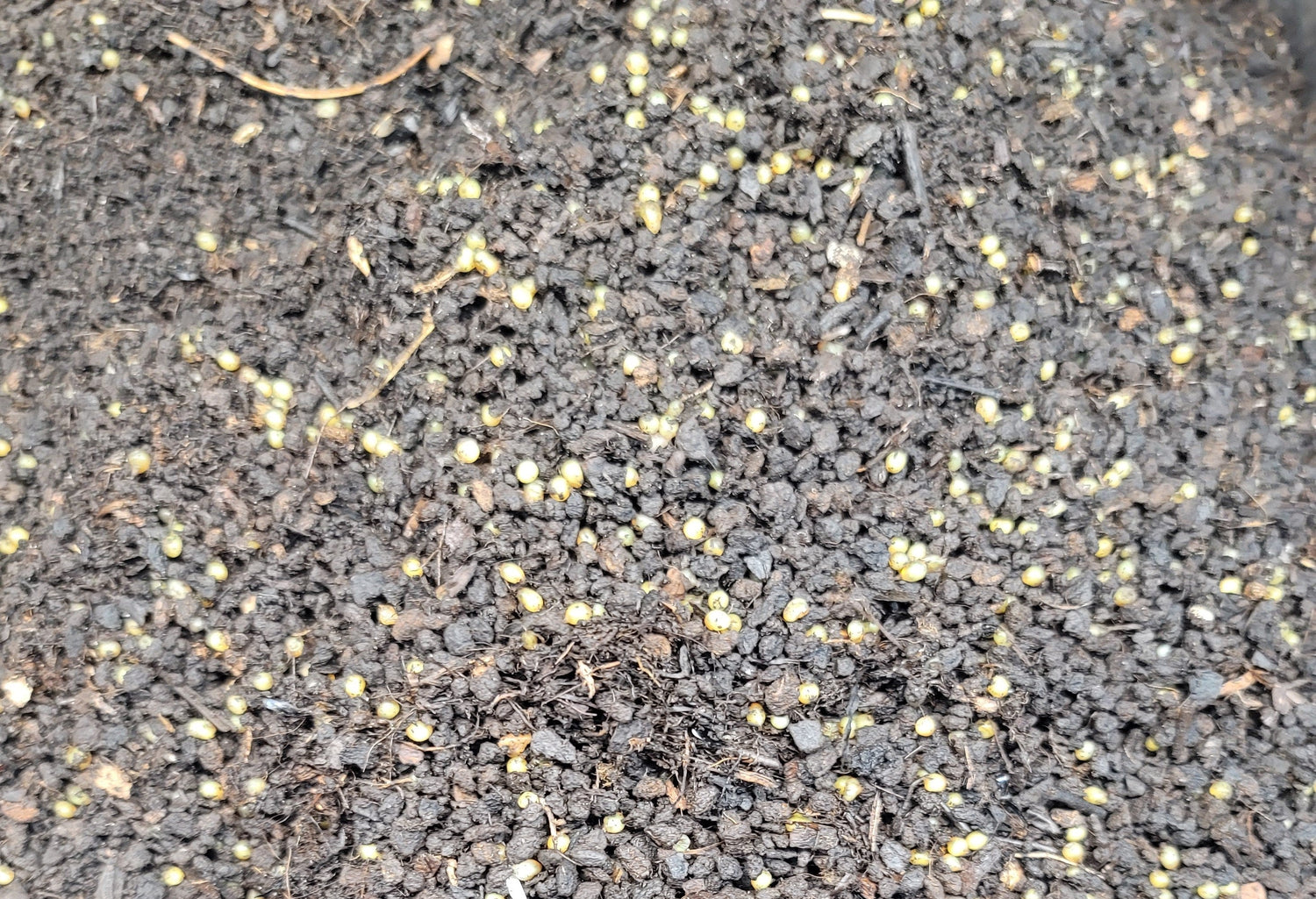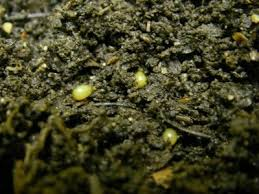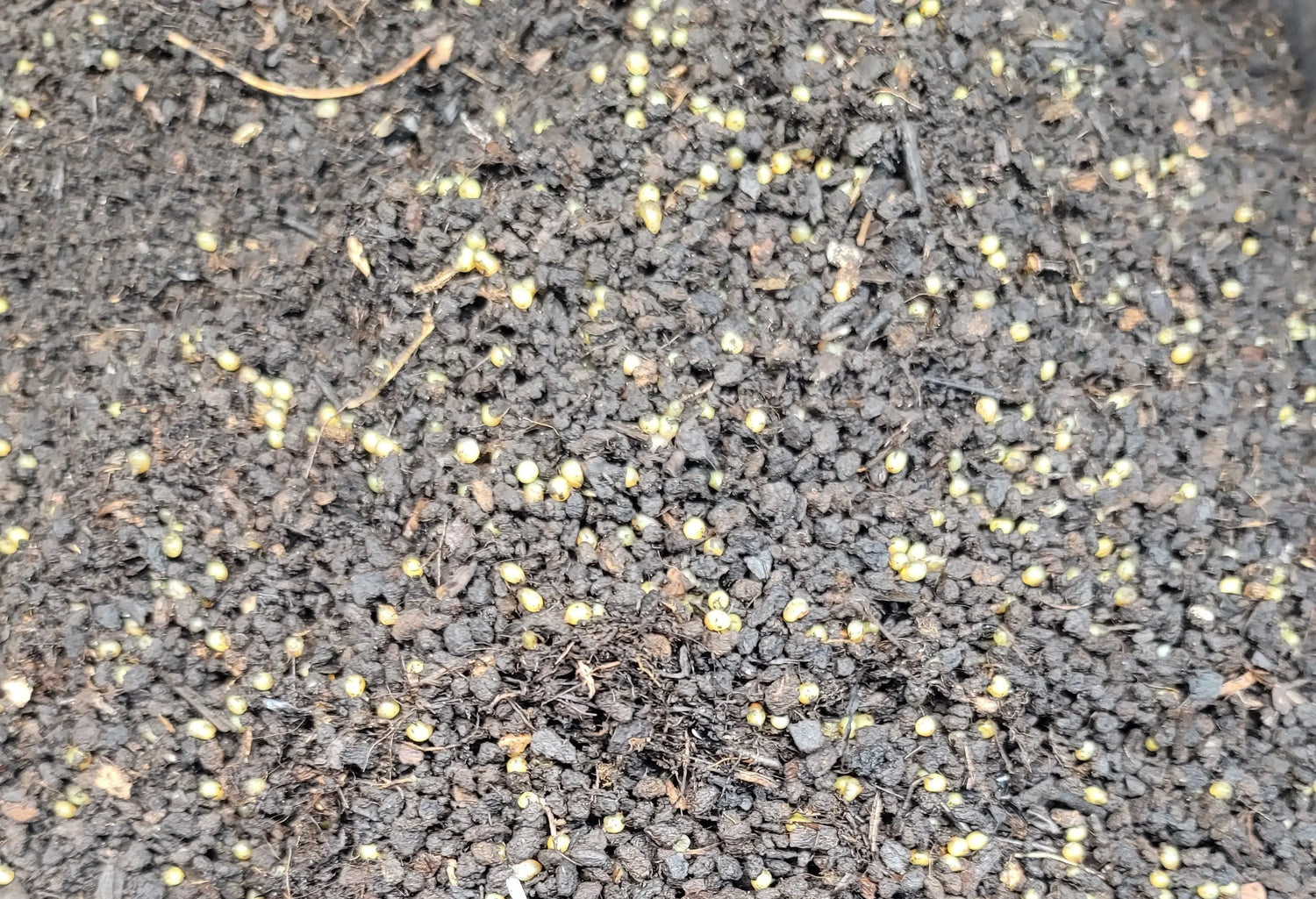Redwiggler reproduction rate - How to calculate it? Can you boost it?

Ever wondered how many worm bins you would need or how many worms would be needed to produce 100 lbs of worms per week without depleting the worm bin? Check out our handy worm bin calculator to find out.
Want to make compost faster?
If yes, redwigglers are your friends. However, as the compost pile size increases, the number of red wigglers composting worms you need will also increase. But an important consideration in this regard is the redwiggler reproduction rate. Once you factor that in, you don't have to worry about adding more red wigglers. Your red wigglers worm population will automatically multiply from every mature worms you have in the worm bin.
Simply add them to the pile and let nature take its course. You just have to be ready to put the worm castings to good use. So, what's the redwiggler reproduction rate? Check out this worm calculator to know the answer.
Redwiggler reproduction rate:
According to Oregon State University , the worm population of red wigglers composting worms can double every 60 days. Also, the baby worms can attain sexual maturity within 45 days, further accelerating red wigglers' population growth if left undisturbed. Wow mature worms within 45 days of hatching!! That's insane.
Before you rejoice at the high reproduction rate, understand the factors that influence the redwiggler reproduction rate and how to tilt them in your favor.
Factors that impact Redwiggler reproduction rate:
Essentially, 3 factors have a significant impact on the reproduction rate.
1. Temperature

Red worms thrive within temperatures of 55 to 77F. If you are searching for the ideal reproduction temperature, it is between 71 to 89F. Anything below 50F impacts their activity, which means they would neither convert organic matter to compost nor reproduce at that temperature. It's a good idea to have a good worm thermometer in the bin.
2. pH

According to a post by Washington State University, red worms need a pH level between 4.2 to 8. If you are looking for the sweet spot, that's approximately 7.0. We use Memes oyster shell flour to balance the ph levels in our worm bins
Simply get a pH tester like UIUMAR soil tester and measure the pH level. Add eggshells to the mix to lower the pH level close to 7 or below. Add calcium carbonate to the soil or bedding material to increase the pH level.
3. Availability of food
You want the adult worm to have some action in the worm bin but if you aren't feeding them properly, How will they breed?
So ensure ample supply of food (check the procedure below to know what to feed them).
How to create proper breeding conditions for red wigglers?
Confused about how to attain the right conditions for your red wigglers? Check the procedure below.
Step 1: Measure the temperature
It's important to keep a watch on the temperature periodically. If it's too hot, use fans to bring the temperature close to 71 to 89F. Too cold? Use a heating system in the area to increase the temperature.
Temperature should always be in the ideal range rather than fluctuating frequently. Temperature red wigglers reproduce best at 78° It good to have a worm thermometer. Get it here
Step 2: Don't ignore the moisture
A post by Oregon State University states that red wigglers are made of 90% water. Therefore, they need a moist environment to thrive and breathe. That's why, when preparing the bedding, ensure that the top 4 inches contain 80% water.
Ideal bedding options include cardboard, shredded paper, dried leaves, grass, and straw. Simply continue adding water to the bedding until it attains a sponge-like texture.
Remember that adding too much water or submerging the entire pile in water can kill the red wigglers. Also, don't forget to turn the bedding weekly to ensure it's loose.
Step 3: Check and maintain the pH level
Apart from moisture, check the pH levels periodically and take corrective measures as highlighted above.
Step 4: Ensure proper food supply
Ideal food items for red wigglers are food scraps which include fruit peels (noncitrus) and vegetables like cucumber, lettuce, and carrot. Coffee grounds and tea bags are good options as well. Giving worms a balanced diet consistant of organice food waste along with Premium Worm Chow will give the red wigglers the nutrition they need to thrive. Another great idea is to feed the microbes which is what adult worms and baby worms actually eat so feeding the microbes some microbial food can help keep your manure worms healthy and thriving.
As for the frequency of feeding them, you would have to add food and observe the consumption rate over the next day to understand how fast they consume. It's time to add more once the food you added is gone. However, don't dump the entire supply in one go, as the food might turn bad before the wigglers consume it and your bin could go anaerobic. This could harm or even kill your red wigglers.
Step 5: Keep the enemies out
Springtails, Ants, and Mites are traditional enemies of red wigglers. Keep them out by keeping the bedding moist but not soggy and keeping the entire bin in cans filled with water up to 4 inches. That way, the pests won't even be able to reach the bins.
Tips to boost Redwiggler reproduction rate:
If you want to further boost the redwiggler reproduction rate, try the tips below.
1. Provide proper nutrition
Red wigglers, like any other worm species, need balanced nutrition. The best way to provide nutrition to them is to rotate the food supply among the options highlighted above. A few other tips to follow include:
-
Always ensure they have at least some food scraps. They shouldn't go hungry.
-
Ensure meat, onions, and potatoes aren't on the menu.
-
Don't overfeed to ensure the worm bin isn't filled with waste.
2. Add aphrodisiacs to the mix
Did you know aphrodisiacs work for red wigglers as well? Although not the same ones as humans consume.
The right aphrodisiacs will have worms crawling over them. When lots of worms gather in a small space, you can't avoid breeding for long, can you?
If you are wondering which aphrodisiacs to use on your red wigglers , check the list below:
-
Microbial food sprinkled on top of any of these food scraps.
-
Sweet Potatoes (boiled and mashed)
-
Watermelon rinds
-
Pumpkin
-
Avocado peels
-
Mushy bananas
-
Mango skins
-
Corn cobs
3. Add proper bedding material
The right bedding material can also make a difference in breeding. The best choice is paper. Although you will need some other type of bedding to break up the paper as it will mat up if you don't have some other type of bedding in the worm bin. Not only does it attain a spongy texture when moist enough, but it's also what the red wigglers prefer.
Here at Memes we like to use Cotton Compost and Mushroom Compost you can check out more info on them here . They make wonderful worm castings too! Some worm farmer like using coco coir because it is great at holding moisture. It is also nuteral in ph. The red wigglers baby worms seem to thrive in coir.
The reason why the worm bedding material matters might be up for debate, but the effects are evident. Therefore, it's a good idea to always provide the right bedding material.
4. Ensure population density is proper
Right population density is crucial for breeding. Too many of them means they slow down reproduction to avoid overcrowding. Too little means they won't be able to find the right partner. Ideal conditions include the availability of food and space, which encourages reproduction.
But what is the ideal density?
A good rule of thumb is a pound of worms in every square foot of space. If you notice the population dwindling, you can add more. If the population grows significantly, split the herd into 2 bins.
FAQs
How many babies do red wigglers have?
Red wiggler's cocoon can consist of 4 to 6 worms. Since both partners lay a cocoon, it means 8 to 12 new red worms.
How often do red wigglers lay cocoons?
Red wigglers can lay 2 cocoons per week. A lot, however, depends on their age, sexual maturity, and the conditions covered in the post above. Red wiggler worms reproduce best at 78° and hatch rates are best at 85°.
What worm reproduces the fastest?
African nightcrawler is the one that reproduces fastest among composting worms. They can lay up to 3 cocoons per week, with each cocoon consisting of 3 babies.
How much can 100 red wigglers eat?
Red wigglers can eat upto half of their body weight per day. It means if you are adding half a pound of red wigglers to a bin, they can eat up to a quarter a pound daily. That's why it is important to monitor and maintain their food supply.
Can you touch red wigglers?
While red wigglers don't sting or bite, it's always best to use protective gloves while handling them.
Conclusion
So, if you want to turn your waste into compost, red wigglers are one of the fastest worms to do so. Since now you are aware of the redwiggler reproduction rate, it makes sense to go ahead and buy them. Click here to buy pure and best red wigglers.
Reference:
https://extension.oregonstate.edu/catalog/pub/em-9034-composting-worms#:~:text=Red%20wiggler%20worms%20reproduce%20rapidly%20after%20they%20reach%20sexual%20maturity%20(usually%2030%20to%2045%20days%20after%20hatching).%20They%20can%20double%20their%20population%20in%20about%2060%20days!
https://www.memesworms.com/products/pure-red-wiggler-eisenia-fetida-composting-worms

Memes Worms



Leave a comment
All comments are moderated before being published.
This site is protected by hCaptcha and the hCaptcha Privacy Policy and Terms of Service apply.